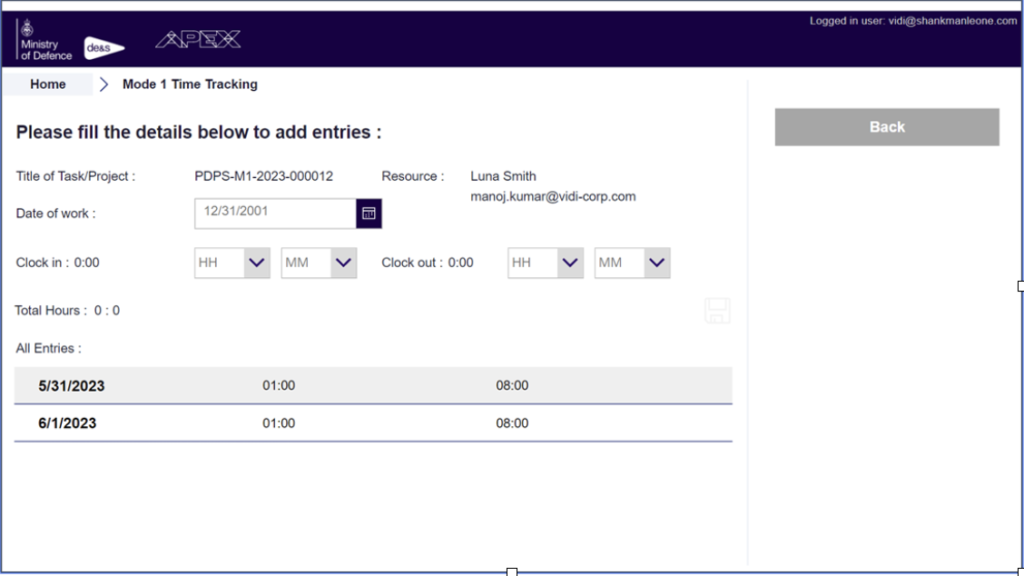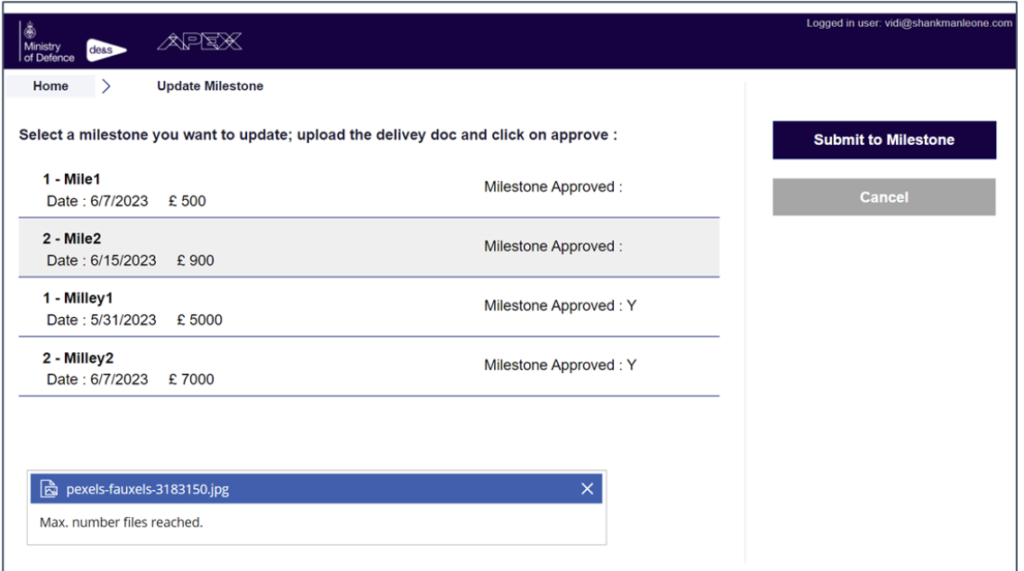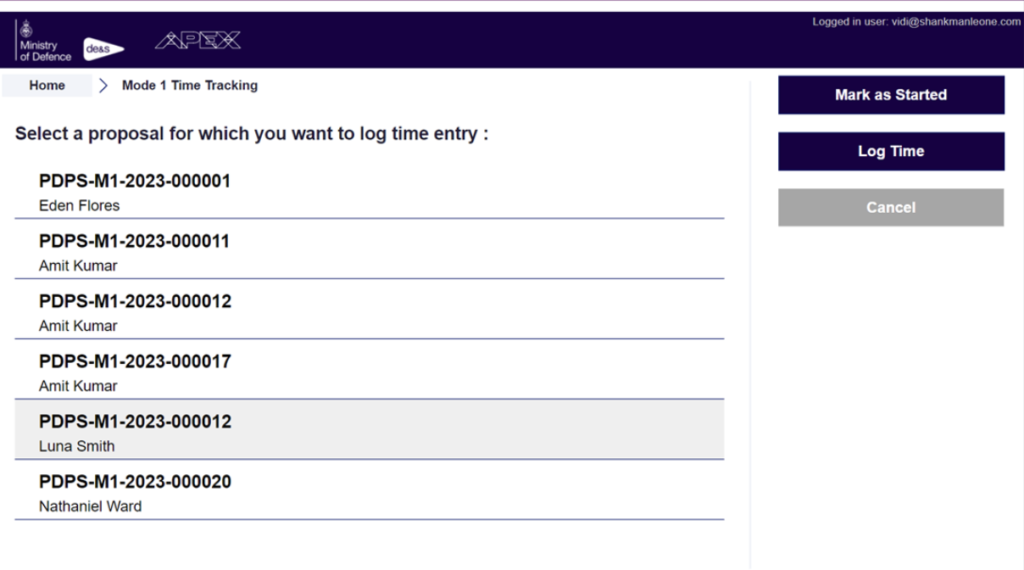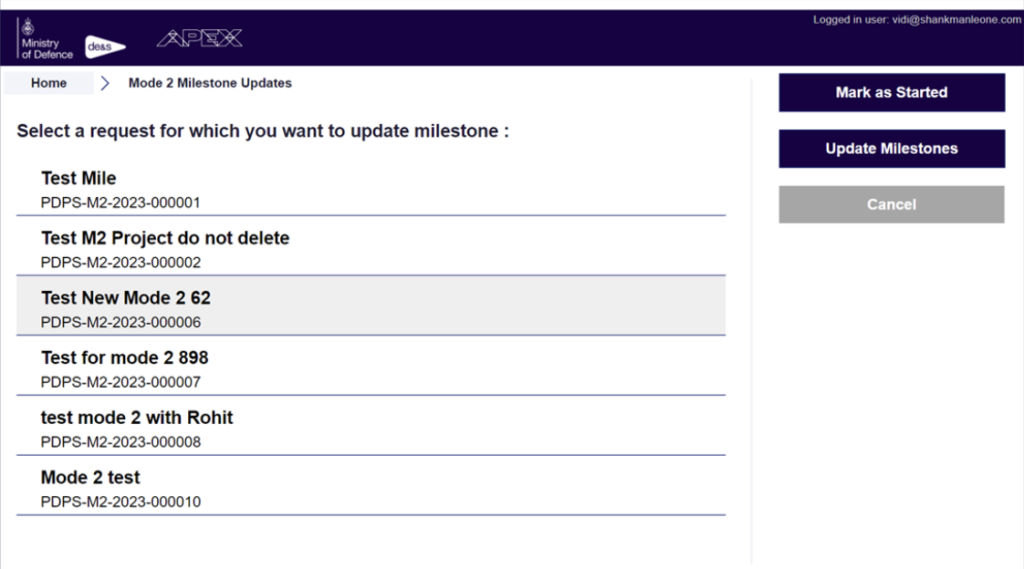Efficient resource management and time tracking are crucial for businesses that juggle multiple projects and teams. Without a streamlined system, companies face inefficiencies that can impact productivity and project outcomes. Recognizing this challenge, we developed a custom Power Apps Time Tracking designed to simplify and optimize the process of logging hours and tracking project milestones. This case study explores the journey of creating this Power Apps, including the challenges faced, our approach to solving these problems, the implementation process, and the positive outcomes achieved.
Before the introduction of our Power Apps, our client struggled with time-consuming and error-prone manual processes for managing time entries and project milestones. With multiple resources working across different projects, their traditional methods were inadequate, resulting in inconsistencies and inefficiencies. The client needed a solution that was not only user-friendly but also scalable to accommodate future needs. This case study highlights how we developed and implemented a custom Power Apps that revolutionized their time-tracking and project management processes, making them more efficient and reliable.
Our Power Apps consultants developed a Power App that was centered around addressing the client’s core needs through a strategic framework focusing on three key goals:
1. User-Friendly Design
One of our primary objectives was to ensure the app was intuitive and easy to use. We wanted to minimize the effort required for users to log hours and submit milestone updates. By designing a clean and simple interface, we aimed to enhance user experience and reduce the learning curve.
Example: We incorporated visual cues and straightforward navigation elements, such as dropdown menus and date pickers, to facilitate quick and accurate data entry.
2. Integration with Existing Systems
The client’s existing project management tools and databases played a crucial role in their operations. Seamless integration with these systems was essential to ensure that the Power Apps would fit smoothly into their current workflow. We focused on creating a UI and backend that would synchronize data between the app and existing platforms.
Example: We integrated the app with the dataverse, allowing for real-time updates and reducing the need for manual data entry.
3. Scalability
As businesses grow, their needs evolve. We designed the app with scalability in mind, ensuring it could handle increased complexity in project tracking and reporting. This foresight was crucial for accommodating future enhancements and additional functionalities.
Example: We built the app with modular components that could be easily updated or expanded to include new features, such as advanced reporting tools or additional project metrics.
Before the Power Apps Time Tracking implementation, our client faced several challenges that impeded their efficiency:
1. Manual Data Entry
Resources manually recorded their hours, which led to inconsistencies and frequent errors. This process was not only time-consuming but also prone to inaccuracies, affecting overall project tracking and reporting.
Example: Manual entry often resulted in discrepancies between logged hours and actual work performed, leading to disputes and delays in project deliverables.
2. Lack of Real-Time Updates
Project managers struggled with limited visibility into the current progress of resource hours and milestones. This lack of real-time data made it difficult to make informed decisions and adjust project plans accordingly.
Example: Without real-time updates, managers could not promptly address issues such as overstaffing or underperformance, impacting project timelines and outcomes.
3. Cumbersome Milestone Tracking
Tracking and submitting milestone progress was a cumbersome process. The absence of a streamlined method for milestone updates led to delays and inefficiencies in project management.
Example: Project milestones were often updated manually through email or spreadsheets, causing delays in communication and hindering timely project reviews.
To address these challenges, we aimed to create a centralized platform that would streamline time logging and milestone tracking, providing real-time updates and improving overall project management efficiency.
The development of the Power Apps Time Tracking involved several stages, each tailored to meet the specific needs of the client. Here’s a detailed look at the implementation process:
1. Designing the Power Apps Time Tracking Interface
The first step was to design an intuitive and user-friendly interface. We categorized the app into two main modes to cater to different needs:
Mode 1: Power Apps Time Tracking for Project Tasks
In this mode, users could log their working hours for specific project tasks. The interface was designed to be straightforward, with options to select the project, enter the date, start time, and end time.

Mode 2: Milestone Submission and Updates
This mode allowed users to submit updates for project milestones. Resources could select the relevant milestone, upload proof of completion, and mark the milestone as complete.

2. Integrating Time Entry Functionality
We developed functionality that enabled resources to:
● Select the Project: Users could choose the project they were working on from a
predefined list.
● Log Time: The app allowed users to enter the date, start time, and end time, which
was then automatically recorded.
● Submit Timecards: Submitted timecards were integrated into the client’s database,
providing immediate access for project managers.

3. Milestone Tracking
For milestone tracking, we implemented features that allowed resources to:
● Select Milestones: Users could choose the milestone they were working on from a
list.
● Upload Proof: Resources could attach files or images as proof of milestone
completion.
● Mark as Complete: Once the proof was uploaded, users could mark the milestone
as complete, triggering an update to project managers.

4. User Testing and Iteration
After developing the initial version of the app, we conducted several rounds of user testing
with actual project resources. This phase was crucial for gathering feedback and making
iterative improvements.
Example: Feedback from users led to adjustments in the interface design, such as
simplifying navigation and improving the clarity of error messages.
The implementation of the Power Apps Time Tracking brought significant improvements to the client’s time-tracking and project management processes:
1. Increased Accuracy
The automated nature of the app reduced time entry errors by 85%. With streamlined processes and real-time updates, resources were less likely to make mistakes in logging their hours.
Example: The reduction in errors minimized disputes over recorded hours and improved the accuracy of project reports.
2. Real-Time Visibility
Project managers gained real-time access to time and milestone updates, which enhanced their ability to oversee projects effectively. This visibility allowed for more informed decision-making and timely interventions.
Example: Managers could quickly identify resource bottlenecks or delays and adjust project plans accordingly.
3. Reduced Admin Overhead
The client reported a 40% reduction in time spent on administrative tasks related to time entry and tracking. The app automated many of these tasks, freeing up time for more strategic activities.
Example: Administrative staff no longer needed to manually compile time reports or track milestone progress, allowing them to focus on other important tasks.
1. Custom Power Apps Time Tracking Boost Efficiency
Developing a Power Apps tailored to specific business needs can greatly enhance efficiency. Custom solutions address unique challenges and streamline processes, resulting in improved productivity and reduced errors.
Example: The Power App we developed not only simplified time tracking but also improved milestone tracking and project oversight.
2. User-Centered Design Is Critical
A user-friendly interface is essential for quick adoption and minimizing errors. Designing with the end-user in mind ensures that the app meets their needs and enhances their experience.
Example: The intuitive design of the app led to higher user satisfaction and fewer training requirements.
3. Real-Time Updates Drive Better Decisions
Real-time data is crucial for effective project management. It empowers project managers to make informed decisions, adjust resources, and address issues promptly.
Example: Real-time updates allowed for proactive management of project milestones and resource allocation.
Power Apps provides a versatile and low-code platform that can transform how businesses handle time entry and resource tracking. In this case study, we successfully developed a Power App Time Tracking that streamlined time logging, improved milestone tracking, and reduced administrative workload. The app has become an integral tool in the client’s project management process, setting the stage for future optimizations and scalability. As businesses continue to evolve, custom Power Apps offer a flexible solution to meet their dynamic needs and drive efficiency.
Support
All the support you need – when you need it. From 1-hour quick fix support to longer-term partnership that drives your business forward.
Consultancy
Advanced data thinking, creative ideas and the best Power Platform practices to unlock the true potential of your business data.
Training
Succeess shouldn’t be a one-off. When we train you teams user adoption surges and your Power Platform results radically improve.